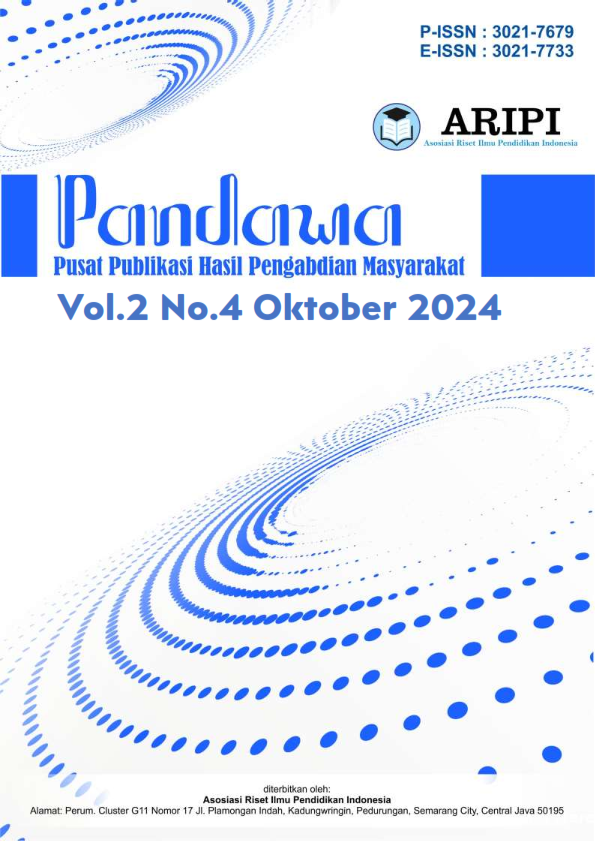Sosialisasi Media Aritmatika Sempoa Pada Orang Tua Anak
DOI:
https://doi.org/10.61132/pandawa.v2i4.1160Keywords:
Arithmetic, Media, Parents, SocializationAbstract
The abacus is a traditional calculating tool from Southeast Asia such as China, Korea, Taiwan and Japan. According to Chen (2009), it is said that the abacus existed in Babylonia and China around 2400 BC and 300 BC. In education in Indonesia in the 1990s the abacus began to enter the form of arithmetic courses, after 700 years of disappearance. The impact of the abacus is amazing, a kindergarten child who masters mathematics can calculate faster than a calculator. The abacus succeeded in attracting the attention of mothers with small children, who then enrolled their children in abacus arithmetic courses. This program is very appropriate for children aged kindergarten to elementary school. The conditions that occurred in RW 01, Gedong Village, the proposing team found that there were still many children who had difficulty using addition, subtraction operations, or using the abacus. Parents don't even understand how to use the abacus in calculating. Maybe this is because there are no parents to teach their children, because the majority of children in RW 01 are from the lower middle class. To overcome the problems mentioned above, the solution offered in this community service is to provide socialization on abacus arithmetic media to parents of children in the RW 01 Gedong Village environment, in order to optimize children's potential, including: increasing the ability to calculate faster, balancing the use of left and right brain and optimizing it to achieve a level of analytical thinking and correct analytical thinking, training concentration thinking power, helping children to master other subjects, developing imagination so that children's creativity develops, and getting used to numbers makes children not I'm afraid of exact lessons
Downloads
References
Arsyad, A. (2013). Media pembelajaran. Jakarta: Raja Grafindo Persada.
Chen, Y. S., Lin, M. J. J., & Chang, C. H. (2009). The positive effects of relationship learning and absorptive capacity on innovation performance and competitive advantage in industrial markets. Industrial Marketing Management.
Darmawan, D. (2012). Mobile learning, sebuah aplikasi teknologi. Bandung: PT Remaja Rosdakarya.
Darmawan. (2010). Model-model pembelajaran: Mengembangkan profesional guru. Jakarta: PT Raja Grafindo Persada.
Harahap. (2010). Analisa kritis atas laporan keuangan (Cet. 11). Jakarta: PT Raja Grafindo Persada.
Januszewski, A., & Molenda, M. (2008). Educational technology: A definition with commentary. New York: Lawrence Erlbaum Associates Taylor & Francis Group.
Ngalimun. (2014). Strategi dan model pembelajaran. Banjarmasin: Aswaja Presindo.
Richey, R. C., & Klein, J. D. (2007). Design and development research methods, strategies, and issues. New York: Routledge.
Downloads
Published
How to Cite
Issue
Section
License
Copyright (c) 2024 Pandawa : Pusat Publikasi Hasil Pengabdian Masyarakat

This work is licensed under a Creative Commons Attribution-ShareAlike 4.0 International License.






